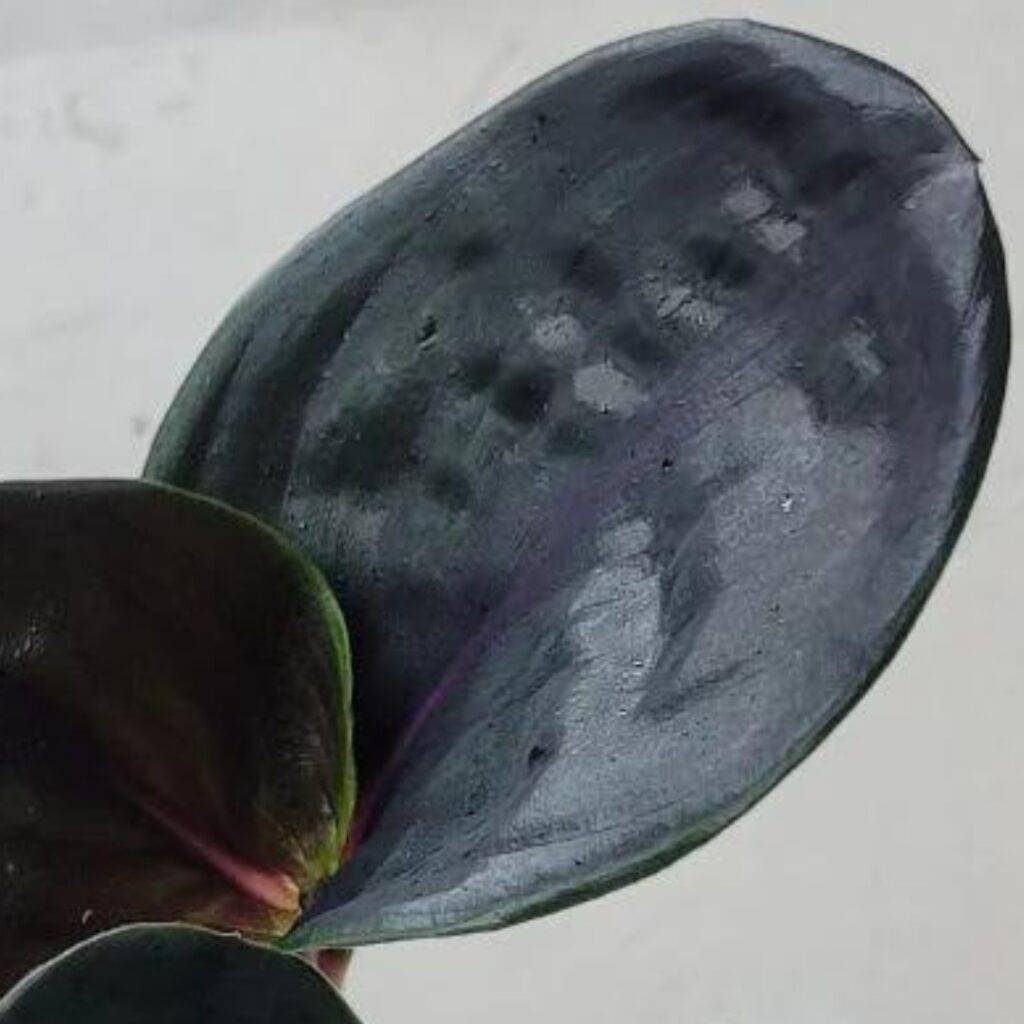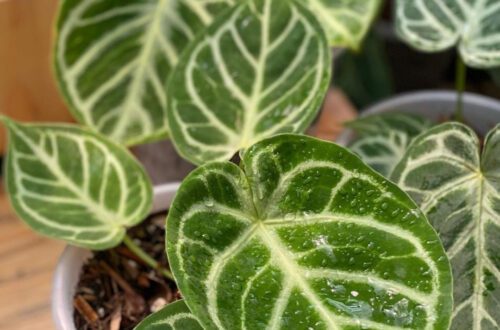
Geogenanthus Ciliatus
We cover all you need to know about the Geogenanthus Ciliatus plant care and propagation. The key to caring for this plant is to give it medium indirect sunlight, and keep it humid and the soil moist.
Geogenanthus Ciliatus Care Summary
| Light needs: | Medium to low light. |
| Watering needs: | Check the soil weekly and water if top quarter is dry. |
| Fertilizer: | A balanced feed monthly in the spring and summer months. |
| Soil: | Add 20% perlite to normal potting compost. |
| Humidity: | 60%. |
| Temperature: | 12 -25°C (54-77°F). |
| Where to buy: | Try our list of Rare Plant Shops or Etsy. |
| Common issues: | Lack of humidity, sun burn. |
Introduction
Originally from South America and known for its impressive round glossy leaves, the Geogenanthus Ciliatus is impressive with its purple hue. It’s only been popular as a houseplant recently. It is lover for those big round glossy purpley leaves.
See also: Fittonia, Jewel Orchid Ludisia Discolor, Jewel Orchid Macodes Petola.
Tip: we recommend Etsy for buying plants. Look for the best rated seller you can, and try to buy as close to your home as possible so the plant does not travel too far.
A note about affiliate links: when you buy a plant, pots, soil, or other goods through links on this article we sometimes earn a commission. It doesn’t cost you anything, but it really helps us out if you do use them. Thanks a lot! An example of this is if you buy a plant on Etsy using this link. Read our privacy policy for more information. Thanks again.
Geogenanthus Ciliatus Light Needs
Medium light is ideal for these plants, they do not want to be in direct sun as it will burn them. They can be absolutely fine in low light too, but can lose some of their shine or hue, so keep an eye out for that and move them to a sightly brighter location if needed. T
Tip: be careful of direct sun on those leaves it can dry them out or even burn them, so keep it a bit further back from a window with direct sunlight. The ideal light requirements for them is medium indirect sunlight. You want to keep those laves looking glossy and lush!
How Often to Water
Check the soil weekly and water them if the to quarter of the soil is dry. They want to stay moist but not be soggy. Make sure they are not sat in excess water at their base, tip it out after watering, you don’t want a soggy bottom! This is really important because you can over water a a plant even if you don’t water it that often, by leaving the plant sat in water that cannot drain away, so make sure you tip it out.
Fertiliser
You can feed them a balanced feed every 3 or 4 weeks in the spring and summer months to encourage growth. Its a good idea to use a really diluted feed the first few times and then gradually increase the dose to avoid fertilizer burn.

Soil
They like a medium that doesn’t hold on to too much water, so add 20% perlite to normal potting compost for a well draining mix that will reduce the risk of root rot. you do not want the soil to get wet and soggy, as this can lead to root rot.
When To Repot
Check the plant’s roots each year in spring and repot it if they are getting crowded. What I do is check all my plants at Easter time, taking them out of their pots a little bit to check the roots. Then, if they need space, you can pot them up in time to give them space to grow in the for the warmer months.
Humidity
These guys need 60% at a minimum. They do best when given more. Keep them in a humid space and the leaves should thrive. Get a humidity meter and you can keep an eye on it.
Tip: You can buy a humidity meter (affiliate link) to keep an eye on maximum and minimum levels.
Temperature
Aim for the broad range of 12 -25°C (54-77°F). Don’t let them get too cold at night or in winter.
How To Propagate Geogenanthus Ciliatus
They can be relatively easily propagated by taking stem cuttings with at least one node and one leaf and then root that cutting in water. Once rooted after a month or two, you can then pot them up in soil once the roots have become well established. Keep the young plants humid once in soil to encourage growth.
You can also use sphagnum moss, soil or leca to propagate these plants instead of water. If using any of these methods, keep the plant as humid as you can while allowing air to circulate, so you could put the cutting and pot inside a plastic bag with the top left unsealed so it will keep the plant humid but allow some air to circulate to avoid rot.
Is Geogenanthus Ciliatus Rare?
It is a relatively rare houseplant but they are starting to become supplied in higher numbers and they do crop up in specialist plant stores now and again.
Geogenanthus Ciliatus Crispy Leaves
Crispy leaves are a sign of lack of moisture in them, normally from a lack of humidity, but can also be due to underwatering). They can also get crispy leaves from sunburn, make sure they are not getting any direct sun.
Geogenanthus Ciliatus Leaves Turning Brown
Browning leaves is a sign of overwatering and root rot. Although they like to stay moist, they do not like to sit in heavy wet soil, make sure yo tip out excess water after watering to avoid water logging.
Geogenanthus Ciliatus Brown Edges
They get browning leaf edge when they get too cold, try to keep it above 12°C (54°F) and keep it away from cold drafts. It can also my a symptom of too strong fertilizer, causing burn, so make sure the feed is well diulted.
Are They Toxic To Cats?
They are not toxic to cats.
Geogenanthus Ciliatus Common Name
They are often sold as as ‘geo’.
Where To Buy
Try our list of Rare Plant Shops or Etsy.
Geogenanthus Ciliatus USDA Zone
Zones 11-12, they do well outside only in climates where it does not get too cold at night.
Geogenanthus Ciliatus FAQs and Common Problems
Common issues include lack of humidity which leads to leaves crisping, as well as sunburn, these plants like low light and high humidity.
They can also get leggy from being in too low light conditions, if this happens you can move them closer to the window.
Why Is My Geogenanthus Ciliatus Not Growing?
The main reasons for slow growth are colder temperatures and too little light. Try to keep it somewhere a bit warmer, and it should ideally be in a spot with medium indirect sunlight.
Why Is My Geogenanthus Ciliatus Drooping?
They can droop from under and overwatering, you want to keep the soil moist but without letting it dry out completely or letting it get soggy.
Additional Resources
- Wikipedia page.
- Buy perlite (Amazon affiliate link).
Other Articles You Might Like
Hope you liked our article, you might also like these articles: Fittonia, Jewel Orchid Ludisia Discolor, Jewel Orchid Macodes Petola.
Please follow us on Instagram and Pinterest for regular plant updates and occasional plant giveaways.





